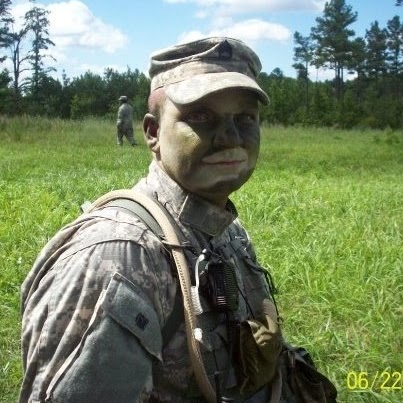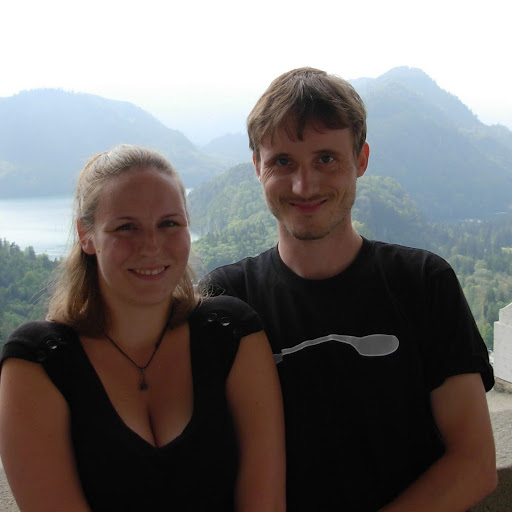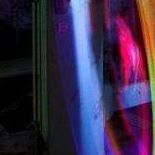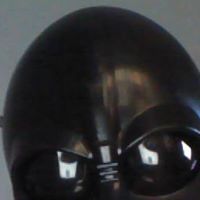Christopher Thomas Rush
age ~40
from Sonoma, CA
- Also known as:
-
- Christopher T Rush
Christopher Rush Phones & Addresses
- Sonoma, CA
- Healdsburg, CA
- 413 Johnson St, Iowa City, IA 52240
- 208 Fairchild St, Iowa City, IA 52245
Work
-
Company:Rush Law Group
-
Address:
Specialities
Discrimination • Employment Contracts • Human Resources Law • Labor and Employment • Medicare Fraud • Personal Injury • Sexual Harassment • Trial Lawyers • Whistleblower Litigation • Workers Compensation • Wrongful Termination
Name / Title
Company / Classification
Phones & Addresses
Owner
Rush Engineering
Engineering Services
Engineering Services
7475 Poplar Dr, Forestville, CA 95436
CAR JAR LLC
Managing
Trisolia LLC
Renewables & Environment · Research & Development · Business Services at Non-Commercial Site
Renewables & Environment · Research & Development · Business Services at Non-Commercial Site
7475 Poplar Dr, Forestville, CA 95436
Us Patents
-
Optical Non-Contact Measuring Probe
view source -
US Patent:7071460, Jul 4, 2006
-
Filed:Jun 6, 2003
-
Appl. No.:10/456055
-
Inventors:Christopher Rush - Forestville CA, US
-
International Classification:G02B 6/00
G01J 1/04 -
US Classification:25022711, 25022729, 25055938, 385 12, 356 731
-
Abstract:An optical non-contact measuring probe for measuring small changes in distance to a target comprises a laser diode () coupled to a projecting fiber (), a receiving fiber () spaced a fixed distance from the projecting fiber, and a linear array () spaced a fixed distance from the emitting face () of the receiving fiber. Light is projected from the projecting fiber to a small area on the target. Light rays reflected from the target are collected by the receiving fiber at an angle and are carried by the receiving fiber by total internal reflection through the emitting face to the linear array where it is detected as a circle having a diameter φD. The distance from the probe to the target can be measured as inversely function of the diameter φD.
-
Displacement Measurement Sensor Using The Confocal Principle With An Optical Fiber
view source -
US Patent:20080130014, Jun 5, 2008
-
Filed:Dec 4, 2007
-
Appl. No.:11/949895
-
Inventors:Christopher John Rush - Forestville CA, US
-
International Classification:G01B 11/00
-
US Classification:356609
-
Abstract:A displacement measurement sensor using the confocal principle with an optical fiber for measuring small changes in distance to a specular target surface comprises a monochromatic light source such as a laser diode coupled to a multimode optical fiber. The fiber functions as both a transmitter, receiver of light ray angle information. An objective lens possessing spherical aberration separates the monochromatic light at different focal distances according to the magnitude of angular deviation from the optical axis. Each distance of the target surface from the objective lens will select specific angular rays able to retrace the path through the objective lens and fiber. Each angle then will correspond to specific distance. Angular information is preserved as the light path is traced back through the fiber and the angle measurement is determined by registering the light impinging on a light sensitive electronic detector array
-
Displacement Measurement Sensor Using The Confocal Principle
view source -
US Patent:20080137061, Jun 12, 2008
-
Filed:Dec 4, 2007
-
Appl. No.:11/949920
-
Inventors:Christopher John Rush - Forestville CA, US
-
International Classification:G01C 3/08
-
US Classification:356 404
-
Abstract:A displacement measurement sensor using the confocal principle for measuring small changes in distance to a specular target surface comprises a monochromatic light source such as a laser diode an aperture, an objective lens system possessing spherical aberration that separates the monochromatic light at different focal distances according to the magnitude of angular deviation from the optical axis. Each distance of the target surface from the objective lens will select specific angular rays able to retrace the path through the objective lens and aperture. Each angle then will correspond to specific distance. The angle measurement is determined by detecting the light impinging on a light sensitive electronic detector array
-
Non-Imaging Solar Concentrator Reflector For Photovoltaic Cells
view source -
US Patent:20110000538, Jan 6, 2011
-
Filed:Jul 2, 2010
-
Appl. No.:12/829790
-
Inventors:Christopher Rush - Forestville CA, US
-
International Classification:H01L 31/0232
-
US Classification:136256
-
Abstract:The invention discloses a non-imaging reflecting surface optimized for concentrating solar energy onto a high efficiency solar cell. It provides for accurate mapping of solar radiation from the reflector to the cell. Additionally it provides for using only that portion of the surface that participates in the radiation transfer and it creates substantially uniform radiation intensity on the cell surface. The uniformity applies to both the spectral and the intensity distribution of the radiation on the cell. The reflecting surface is an off-axis parabolic surface trimmed to include only ray intercepts that travel to the solar cell surface. The solar cell is located off-focus so that rays from the reflector intercept the cell surface according to a predetermined mapping.
-
Bookbinding System And Method
view source -
US Patent:61557633, Dec 5, 2000
-
Filed:Mar 15, 1999
-
Appl. No.:9/270247
-
Inventors:Kevin P. Parker - Berkeley CA
Christopher J. Rush - San Leandro CA
Keith A. Wilson - El Cerrito CA
Eliza Laffin - Emeryville CA -
Assignee:Powis Parker Inc. - Berkeley CA
-
International Classification:B42D 304
B42C 300 -
US Classification:412 6
-
Abstract:A bookbinding system and method of binding books including a cover/spine assembly having a relatively rigid cover section with a length and width at least as great as that of the stack of sheets to be bound and a spine section having a width greater than the height of the stack. The cover/spine assembly and the spine section are secured together along the length of the cover section so that the spine section can be folded along a first edge with respect to the cover/spine assembly. A heat activated matrix is disposed on the spine section including a central adhesive band and an outer band disposed between the central adhesive band and a second edge of the spine section. Binding is carried out by placing the stack over the cover section and folding the spine section over the edge of the stack. Preferably a second relatively rigid cover section is placed on top of the stack so that the outer adhesive band on the spine section will extend over second cover section. The central adhesive band is a low viscosity adhesive which, when activated, bonds the sheets of the stack to the spine section to form the spine of the bound book.
Medicine Doctors

Christopher H. Rush
view sourceSpecialties:
Family Medicine
Work:
West Florida Primary CareWest Florida Medical Group
7458 Pne Frst Rd, Pensacola, FL 32526
8509442885 (phone), 8509410084 (fax)
7458 Pne Frst Rd, Pensacola, FL 32526
8509442885 (phone), 8509410084 (fax)
Education:
Medical School
Temple University School of Medicine
Graduated: 1997
Temple University School of Medicine
Graduated: 1997
Procedures:
Arthrocentesis
Destruction of Benign/Premalignant Skin Lesions
Electrocardiogram (EKG or ECG)
Pulmonary Function Tests
Skin Tags Removal
Vaccine Administration
Destruction of Benign/Premalignant Skin Lesions
Electrocardiogram (EKG or ECG)
Pulmonary Function Tests
Skin Tags Removal
Vaccine Administration
Conditions:
Acute Sinusitis
Acute Upper Respiratory Tract Infections
Anxiety Phobic Disorders
Diabetes Mellitus (DM)
Gastroesophageal Reflux Disease (GERD)
Acute Upper Respiratory Tract Infections
Anxiety Phobic Disorders
Diabetes Mellitus (DM)
Gastroesophageal Reflux Disease (GERD)
Languages:
English
Description:
Dr. Rush graduated from the Temple University School of Medicine in 1997. He works in Pensacola, FL and specializes in Family Medicine. Dr. Rush is affiliated with West Florida Hospital.

Christopher T. Rush
view sourceSpecialties:
Diagnostic Radiology, Vascular & Interventional Rad
Work:
Radiology Specialists Of Florida
601 E Rollins St, Orlando, FL 32803
4073031944 (phone), 4072004947 (fax)
601 E Rollins St, Orlando, FL 32803
4073031944 (phone), 4072004947 (fax)
Education:
Medical School
University of Florida College of Medicine at Gainesville
Graduated: 1996
University of Florida College of Medicine at Gainesville
Graduated: 1996
Languages:
English
Description:
Dr. Rush graduated from the University of Florida College of Medicine at Gainesville in 1996. He works in Orlando, FL and specializes in Diagnostic Radiology and Vascular & Interventional Rad. Dr. Rush is affiliated with Florida Hospital Flagler and Florida Hospital Orlando.
Isbn (Books And Publications)
-
A Resurrection Of A Kind
view source -
Author:Christopher Rush
-
ISBN #:0080304001
-
A Twelve Month And A Day
view source -
Author:Christopher Rush
-
ISBN #:0080324282
-
Two Christmas Stories
view source -
Author:Christopher Rush
-
ISBN #:0080365868
-
Into The Ebb: A New Collection Of East Neuk Stories
view source -
Author:Christopher Rush
-
ISBN #:0080365906
-
With Sharp Compassion: Norman Dott ; Freeman Surgeon Of Edinburgh
view source -
Author:Christopher Rush
-
ISBN #:0080379753
-
A Twelve Month And A Day
view source -
Author:Christopher Rush
-
ISBN #:0862414393
-
Last Lesson Of The Afternoon
view source -
Author:Christopher Rush
-
ISBN #:0862414687
-
Last Lesson Of The Afternoon
view source -
Author:Christopher Rush
-
ISBN #:0862416493
Resumes

Litigation At Jonathan Tolentino Pa
view sourcePosition:
Litigation at Jonathan Tolentino PA
Location:
Naples, Florida
Industry:
Law Practice
Work:
Jonathan Tolentino PA since Apr 2002
Litigation
Morgan Stanley - Melbourne, Florida Area Feb 2001 - Mar 2002
Financial Advisor
Litigation
Morgan Stanley - Melbourne, Florida Area Feb 2001 - Mar 2002
Financial Advisor
Education:
Florida Gulf Coast University
BA
BA
Skills:
Litigation
Commercial Litigation
Legal Research
Civil Litigation
Legal Writing
Intellectual Property
Corporate Law
Microsoft Office
Microsoft Excel
Employment Law
Personal Injury
Mergers
Microsoft Word
Mediation
Family Law
PowerPoint
Courts
Real Estate
Criminal Law
Negotiation
Mergers & Acquisitions
Commercial Litigation
Legal Research
Civil Litigation
Legal Writing
Intellectual Property
Corporate Law
Microsoft Office
Microsoft Excel
Employment Law
Personal Injury
Mergers
Microsoft Word
Mediation
Family Law
PowerPoint
Courts
Real Estate
Criminal Law
Negotiation
Mergers & Acquisitions
Interests:
Golf, Running,

Project Manager At Revolution Window Systems
view sourcePosition:
Estimator at Revolution Window Systems
Location:
Baltimore, Maryland
Industry:
Building Materials
Work:
Revolution Window Systems since Oct 2011
Estimator
Marvin Window & Door Planning Centre Apr 2008 - Sep 2011
Estimator / Inside Sales
Estimator
Marvin Window & Door Planning Centre Apr 2008 - Sep 2011
Estimator / Inside Sales

Insurance Agent At Mutual Of Omaha
view sourcePosition:
Insurance Agent at Mutual of Omaha
Location:
State College, Pennsylvania
Industry:
Insurance
Work:
Mutual of Omaha since Mar 2010
Insurance Agent
Domino's Pizza Apr 1999 - Jan 2010
Franchisee
Insurance Agent
Domino's Pizza Apr 1999 - Jan 2010
Franchisee
Education:
Penn State University 2009 - 2010
Interests:
Long distance running, Hiking, foreign languages
Honor & Awards:
Huntingdon Chamber of Commerce Customer Service Award.

Christopher Rush
view sourceLocation:
New York, New York
Industry:
Education Management
Skills:
Program Management
Business Analysis
Business Analysis
Certifications:
Project Management Professional (PMP), Project Management Institute (PMI)
A+ Certified Professional, CompTIA
A+ Certified Professional, CompTIA
Lawyers & Attorneys

Christopher Rush - Lawyer
view sourceOffice:
Rush Law Group
Specialties:
Discrimination
Employment Contracts
Human Resources Law
Labor and Employment
Medicare Fraud
Personal Injury
Sexual Harassment
Trial Lawyers
Whistleblower Litigation
Workers Compensation
Wrongful Termination
Employment Contracts
Human Resources Law
Labor and Employment
Medicare Fraud
Personal Injury
Sexual Harassment
Trial Lawyers
Whistleblower Litigation
Workers Compensation
Wrongful Termination
ISLN:
911895184
Admitted:
1986
University:
University of Maine, B.A., 1982
Law School:
Vermont Law School, J.D., 1986
Classmates

Christopher Rush
view sourceSchools:
Wilson Elementary School Chicago Heights IL 1975-1981, Washington Junior High School Chicago Heights IL 1981-1984
Community:
Maneasseaha Blackful, Heather Ton

Christopher Rush
view sourceSchools:
Greenville High School Greenville MI 1990-1994
Community:
Rosemary Bliss, Dennis Wright

Christopher Rush
view sourceSchools:
Prince Edward Academy Farmville VA 1987-1991
Community:
Sharon Wallace, Linda Carmichael, Sherry Overton

Christopher Rush
view sourceSchools:
H. Glenn Richardson Elementary School Fairfield CA 1986-1987, Grange Middle School Fairfield CA 1987-1989
Community:
Lynn Berry, Calesta Day, Heidi Morton, Cristy Macias

Christopher Rush
view sourceSchools:
Woodbrook Middle School Tacoma WA 1984-1987, Woodbrook Junior High School Lakewood (pierce Co.) WA 1985-1988
Community:
Kevin Hobgood, Tchetha Ai

Christopher Rush
view sourceSchools:
Upper Dublin High School Ft. Washington PA 1994-1998
Community:
Diane Sandy, Beverly Daniels

Christopher Rush
view sourceSchools:
Queen of Apostles School Riverdale IL 1983-1987
Community:
Chris Churilla, Cynthia Vandyck, Russell Wasserman, Michael Prince

Christopher Rush
view sourceSchools:
Pierre High School Pierre SD 1985-1989
Community:
Ray Heuer, Dawn Duggan, Ward Judson, Angela Niehoff, Christina Corwin, Vickie Wesemann, Phil Parks, Evan Hermanson, Venus Adams, Jackie Johnsen, Kristi Rupiper, Sara Anderson
Myspace
Youtube
Googleplus

Christopher Rush
Work:
Wells Fargo - Software Quality Analyst (2006)
Education:
Bloom High School

Christopher Rush
Education:
None - None
Tagline:
I'm from Jersey, I'm white, and I can't dance... Any questions?

Christopher Rush
Education:
Thurgood Marshall

Christopher Rush (Stickma...

Christopher Rush

Christopher Rush
About:
I live in NJ and work with computers and technology. Family currently consists of Allison and I, our two cats and two dogs.

Christopher Rush

Christopher Rush

Christopher Rush
view source
Christopher Rush
view source
Christopher Marcus Rush
view source
Christopher Rush
view source
Christopher Rush
view source
Christopher Rush
view source
Christopher Rush
view source
Christopher R. Rush
view sourceFlickr
Get Report for Christopher Thomas Rush from Sonoma, CA, age ~40


















